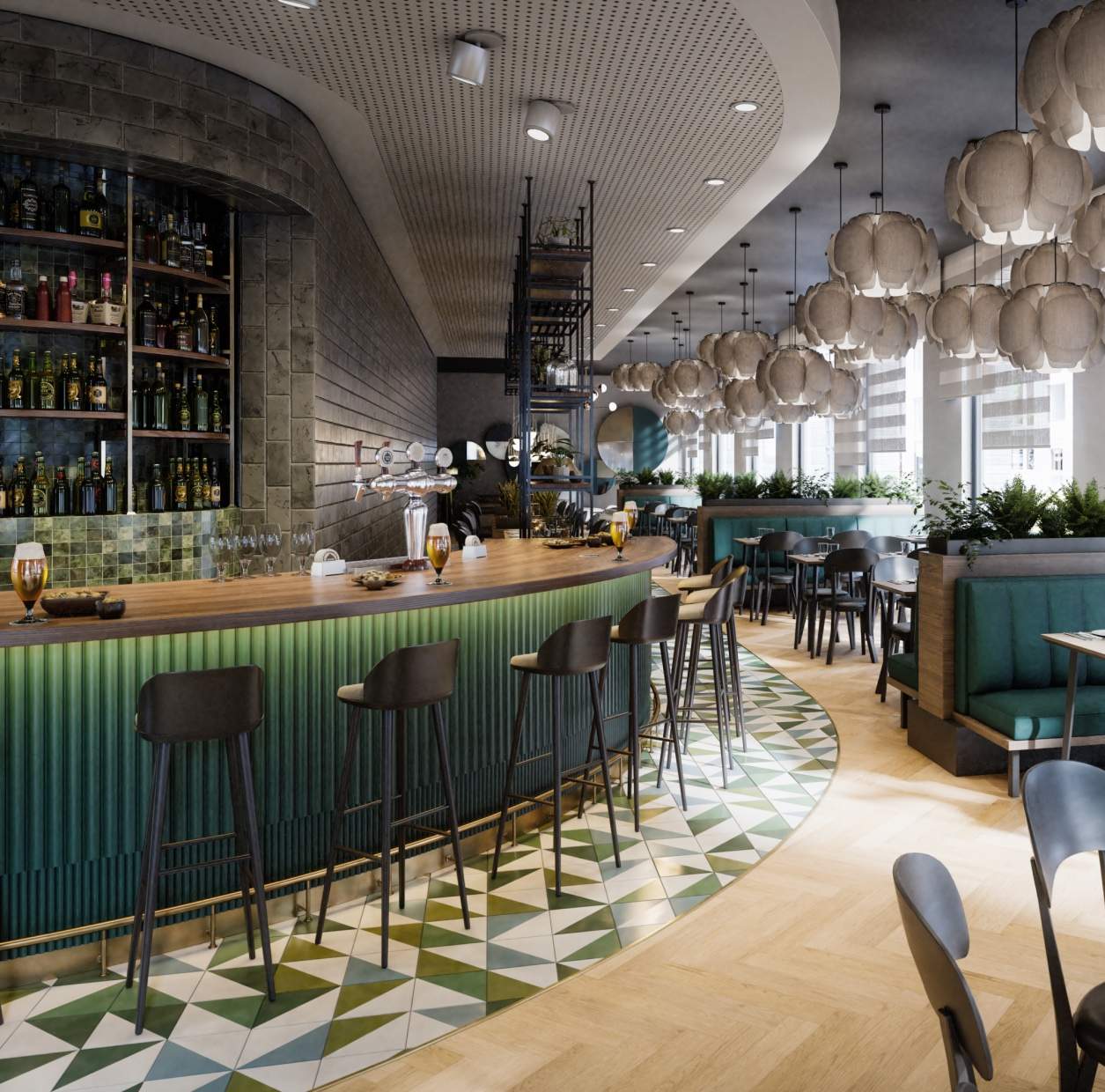Your business plan will be the roadmap from which your new restaurant develops. No matter how much thought you’ve put into your concept or how many trusted colleagues have assured you of its greatness, you should write a business plan. It will prove the viability of your concept to potential investors and provide them with a clear and engaging answer to the question: “Why does the world need this restaurant?”
“The point of a business plan is to show that you’ve done your homework,” says Charles Bililies, owner of Souvla, a fine casual Greek restaurant in San Francisco that has received national acclaim since opening in the spring of 2014.
“You have to show any potential investor that you have an actual plan, you know what you’re talking about, it looks professional, and you’re not just screwing around.”
What your business plan should cover
The strongest business plans always include all or most of the components described below. Bililies advises that first-time restaurateurs read a bunch of different business plans for other restaurants and technology and retail companies to get a better sense of layout options, writing styles, and clarity of concept. Put the sections that you feel would be most compelling to someone who’s never met you first: the “Management Team” section if you’re coming from high-profile establishments, for example. The goal is for the reader to keep turning the page.
Quick links
Branded cover
Concept
Sample menu
Service
Management team
Design
Target market
Location
Market overview
Marketing and publicity
Specialists and consultants
Business structure
Financials
1. Branded cover
Include your logo (even if it’s not finalized), the date, and your name.
2. Restaurant concept
Describe your restaurant concept and get the reader excited about your idea. Include an executive summary and go into detail about the food you’ll be serving, inspiration behind your concept, and an overview of service style. Define clearly what will be unique about your restaurant and include your mission statement.
3. Sample restaurant menu
The menu is the most important touchpoint of any restaurant’s brand, so this should be more than just a simple list of items. Incorporate your logo and mock up a formatted menu design (tap a designer for help if needed).
Your sample menu should also include prices that are based on a detailed cost analysis. This will give investors a clear understanding of your targeted price point, provide the first building block to figuring out average check estimations needed to create financial projections for starting costs, and show investors that you’ve done the homework needed to be confident that you’ll be able to sell these items at these prices and operate within your budget.
4. Restaurant service
This section is most relevant for fine-dining concepts, concepts that have a unique service style, or if you have particularly strong feelings about what role service will play in your restaurant. It can be a powerful way of conveying your approach to hospitality to investors by explaining the details of the guest’s service experience.
Will your restaurant have counter service and restaurant hostess software designed to get guests on their way as quickly as possible, or will it look more like a theater, with captains putting plates in front of guests simultaneously? If an extensive wine program is an integral part of what you’re doing, will you have a sommelier? If you don’t feel that service is a noteworthy component of your operation, address it briefly in the concept section.
5. Restaurant management team
Write a brief overview of yourself and the team you have established so far. You want to demonstrate that the work experience you’ve acquired over the course of your career has provided you with the necessary skills to run a successful restaurant and act as a restaurant business owner. Ideally, once you have described the strong suit of every member of your team, you’ll be presenting a full deck. Most independent restaurant investors are in this for more than just money, so giving some indication of what you value and who you are outside of work may also be helpful.
6. Restaurant design
Incorporate some visuals. Create a mood board that shows images related to the design and feel of your restaurant. Whether you’re planning to cook in a wood-burning oven or are designing an eclectic front-of-house, be sure to include those ideas. Photos of materials and snippets of other restaurants that you love that are similar to the brand you’re building are also helpful.
7. Target market
Who is going to eat at your restaurant? What do they do for a living, how old are they, and what’s their average income? Once you’ve described them in detail, reiterate why your specific concept will be appealing to them.
8. Restaurant location
There should be a natural and very clear connection between the information you present in the “Target Market” section and this one. You probably won’t have a specific restaurant location identified at this point in the process, but you should talk about viable neighborhoods. Don’t assume that potential investors will be familiar with the areas you’re discussing and who works or lives there—make the connections clear. You want readers to be confident that your restaurant’s “ideal” diner intersects with the neighborhood(s) you’re proposing as often as possible.
If you don’t have a site, this is a good place to discuss what you’re looking for in terms of square footage, foot traffic, parking, freeway accessibility, outdoor seating, and other important details.
9. Market overview
Address the micro and macro market conditions in your area and how they relate to licenses and permits. At a macro level, what are the local and regional economic conditions? If restaurants are doing poorly, explain why yours won’t; if restaurants are doing well, explain how you’ll be able to compete in an already booming restaurant climate. At a micro level, discuss who your direct competitors are. Talk about what types of restaurants share your target market and how you’ll differentiate yourself.
10. Restaurant marketing and publicity
The restaurant landscape is only getting more competitive. Discuss your pre- and post-opening marketing plan to show investors how you plan to gain traction leading up to opening day, as well as how you’ll keep the momentum going. If you’re going to retain a PR/marketing company, introduce them and explain why you’ve chosen them over other companies (including some of their best-known clients helps). If not, convey that you have a solid plan in place to generate attention on your own through social media, your website, and media connections.
11. Specialists and consultants
List any outside contractors you plan to retain, such as:
- Accountant
- Attorney
- Architect
- Designer
- General contractor
- PR and marketing
Briefly explain the services they’ll be providing for you, why you chose them, and any notable accomplishments.
12. Restaurant business structure
This section should be short and sweet. What type of business structure have you set up and why did you make that specific decision? You will need to work with an attorney to help you determine what business structure is best for you.
“Step one: write a business plan. Step two: hire a good attorney. In addition to helping me build a smart, sustainable business structure, my attorney was also a great resource for reviewing my business plan because she’s read thousands of them. She was a very helpful, experienced outside perspective for more than just legal matters.” — Charles Bililies.
13. Financials and funding for a restaurant
Let your accountant guide you through this portion of your business plan. It is crucial to choose someone with experience in restaurant financials (not just one or two places), as they should be familiar with the financial specifics of fundraising for a restaurant and know what questions to ask you.
Before creating realistic financial projections, your accountant will want to know approximately how many seats you’re planning on having, what your average check will be, and approximately how many covers per day you plan to do. Being conservative in these estimations is key as these three data points will be used as the basis for figuring out whether your concept is financially feasible.
Lou Guerrero, Principal at Kross, Baumgarten, Kniss & Guerrero, emphasizes, “You’ll get a lot of accountants that tell you that they’ve done a couple of restaurants, but you have to choose someone that has a deep expertise in what you’re doing. There’s nothing to gain from going with someone that doesn’t have a very restaurant-centric practice.”
A well-vetted accountant with restaurant experience will know exactly what you’ll need to have prepared to show investors. The key projections you can expect to work on are:
- Pro forma profit and loss statement for the first three to five years of operation
- Break even analysis
- Capital requirements budget
Free tools to build a restaurant business plan in Canada
If design is not your forte, consider using a free online template. There are plenty of templates available for download on the web that can aid in this process. Whether you’re a seasoned pro or need help getting started, there are some great options
- Restaurants Canada offer free templates and downloadable resources to help you build your first business plan
- Canva: Bring your descriptions and its templates will help you do the rest. Canva hosts a library of thousands of free templates to choose from.
- VistaCreate: The plug-and-play menu templates are easy to use, and the platform has the option for print and delivery.




